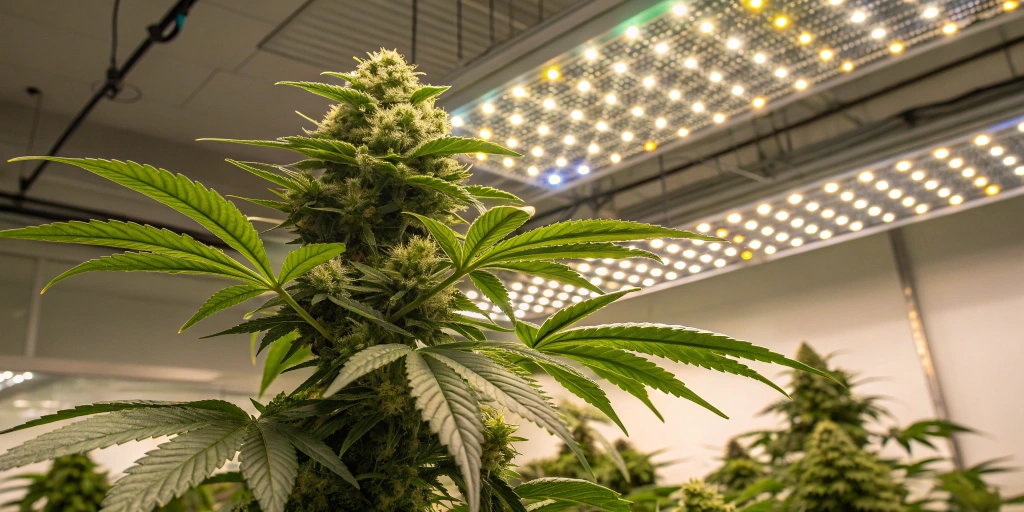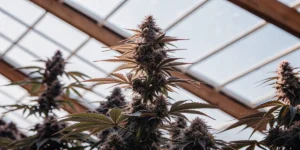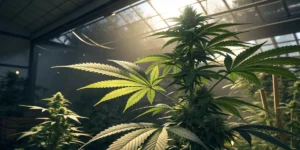Fat Banana Auto strain: Exceptional Genetics and Effects
Origins and Genetics
Fat Banana Auto strain comes from a carefully engineered genetic blend that infuses the plant with rich, tropical flavors and sturdy growth traits. This auto-flowering variety develops on its own timeline, making cultivation simpler and more predictable. The compact plant structure makes it perfect for limited spaces, ensuring that each cycle produces consistent, high-quality yields without unnecessary complications.
The strain’s lineage combines potent indica stability with sativa energy, resulting in a balanced hybrid that meets both recreational and medicinal needs. Its robust genetics guarantee vigorous growth and impressive bud formation, giving growers a dependable crop that stands out in both flavor and performance.
Effects and Potency
Fat Banana Auto strain delivers a balanced high that uplifts the mind while easing physical tension. With THC levels maintained in a moderate range, the strain produces an energizing buzz that encourages focus and creativity, yet it leaves the body pleasantly relaxed. The taste features a tropical mix of sweet banana and a hint of spice, creating an aroma that is both refreshing and distinctive.
Users report a clear-headed, enjoyable experience that works well during daytime activities or early evenings. The balanced effects, combined with its unique tropical flavor, make Fat Banana Auto strain a popular choice among cultivators and consumers alike who seek quality and consistency in every harvest.
Environmental Requirements for Growing Fat Banana Auto strain
Setting Up the Growing Cannabis Space
Establishing a proper grow space is essential for maximizing the potential of Fat Banana Auto strain. Choose a clean, organized area with ample ventilation, controlled lighting, and stable temperature and humidity. Whether you use a dedicated room, a compact tent, or a small indoor setup, equip the space with reliable tools such as fans, carbon filters, and timers. This careful arrangement minimizes stress on the plant and creates the perfect conditions for vigorous growth.
A well-planned space not only enhances light distribution and airflow but also simplifies maintenance tasks like watering and monitoring. By optimizing every aspect of your grow area, you set the stage for a robust crop of Fat Banana Auto strain that delivers impressive yields and outstanding bud quality.
Temperature and Humidity
Maintaining stable temperature and humidity levels is essential for the healthy development of Fat Banana Auto strain. In the vegetative stage, temperatures between 70°F and 80°F promote robust growth, while slightly lower temperatures during flowering help increase resin production. Keeping humidity around 50–60% initially and reducing it to 40–50% in the flowering stage prevents mold and mildew, ensuring the buds develop optimally.
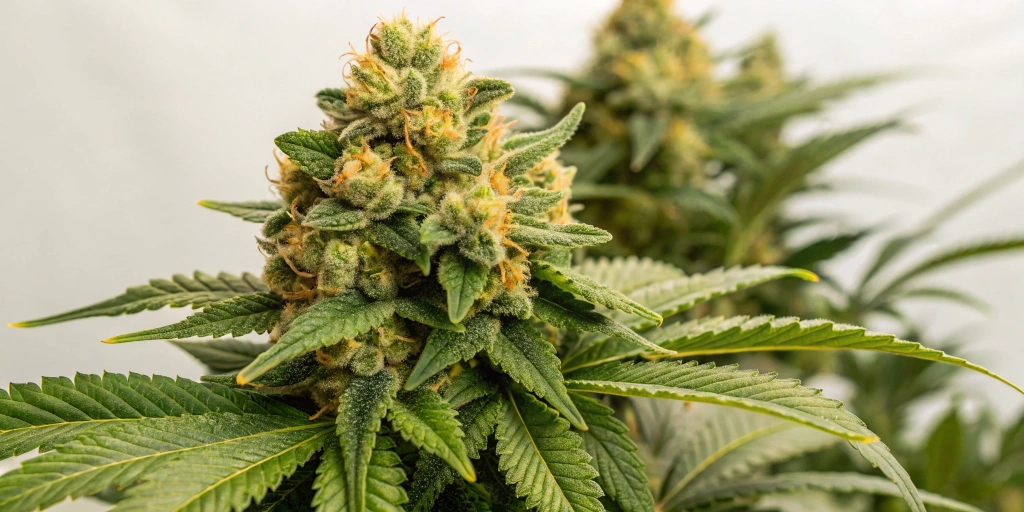
Indoor Cannabis Cultivation
Advantages of Growing Indoors
Indoor cultivation offers complete control over environmental factors, which is especially beneficial for growing Fat Banana Auto strain. This method protects the plant from unpredictable weather and pest issues while allowing precise adjustments to light, temperature, and humidity. Every variable—from nutrient delivery to airflow—can be managed for uniform, high-quality bud development even in limited spaces. This control results in consistent yields that satisfy both novice and experienced growers.
The controlled indoor environment also enables year-round cultivation regardless of external conditions. With a well-managed setup, every aspect of growth can be optimized, ensuring that Fat Banana Auto strain produces dense, aromatic buds that meet high standards of quality and potency.
Lighting Needs
For indoor cultivation, proper lighting is critical to ensure vigorous growth and robust bud production. Full-spectrum LED or HPS lights provide the energy needed for both vegetative and flowering stages. Position the lights at an optimal distance to avoid heat stress while ensuring even light distribution throughout the canopy. This careful setup promotes efficient photosynthesis, enabling Fat Banana Auto strain to reach its full yield potential with dense, resinous buds that shine with quality.
Outdoor Cannabis Cultivation
Best Conditions for Outdoor Growth
Outdoor cultivation of Fat Banana Auto strain thrives under sunny, warm conditions with plenty of natural airflow. Select a location that receives at least six hours of direct sunlight daily, as natural light enhances terpene production and intensifies the tropical flavor profile. The soil must be well-draining and enriched with organic matter to support vigorous growth and high yields. These natural conditions allow the plant to fully express its robust genetics.
A favorable outdoor environment also means selecting a site that offers some protection from extreme weather, such as heavy winds or intense rain, while still ensuring ample sunlight. With proper site selection and management, outdoor growers can achieve impressive yields of Fat Banana Auto strain with outstanding bud quality.
Growing Season
Timing is critical for successful outdoor cultivation of Fat Banana Auto strain. Planting should occur in early spring when temperatures are reliably warm and frost is no longer a threat. This schedule allows the plant to benefit from long, sunny days throughout the summer, with the growing season extending into early fall before cooler weather arrives. A well-planned growing season maximizes both light exposure and warmth, leading to vigorous growth and abundant bud production.
Monitoring local weather patterns and adjusting planting schedules accordingly ensures that the plant develops under optimal conditions, resulting in a robust crop that fully displays the strain’s potential.
Advantages of Growing Fat Banana Auto strain
Fat Banana Auto strain offers several benefits for cultivators, including a fast growth cycle and compact size that allows for high yields even in limited spaces. Its robust genetics and auto-flowering trait make it easy to manage and reliable in producing consistent, high-quality buds. The strain’s tropical flavor profile, combined with its balanced effects, ensures that it meets both recreational and medicinal needs, making it a highly attractive option for both novice and experienced growers.
Growing this strain indoors or outdoors provides flexibility, and its rapid cycle enables multiple harvests in a single year. With minimal maintenance requirements and impressive performance in small grow spaces, Fat Banana Auto strain is a practical choice for maximizing yield without complex setups.
Problems in Cultivating Fat Banana Auto strain
Overwatering
Overwatering can damage the delicate root system of Fat Banana Auto strain, leading to root rot and fungal infections that stunt growth and lower yields. It is essential to allow the soil to dry slightly between waterings and to use containers with proper drainage. Adjust your watering schedule based on the plant’s needs rather than sticking to a rigid routine, ensuring healthy root development throughout the entire cycle.
Pest Infestations
Pests such as spider mites, aphids, and thrips can quickly undermine the health of Fat Banana Auto strain if not managed properly. Regular inspections and the use of organic pest control measures help keep these threats under control. Early detection and prompt treatment are key to preventing widespread infestations that could compromise yield and bud quality, ensuring a robust, healthy crop.
Mold and Mildew
Mold and mildew are significant issues during the flowering stage when dense buds create a humid microenvironment. High humidity combined with poor airflow can trigger fungal growth that damages the plant and diminishes bud quality. Controlling humidity, improving ventilation, and promptly removing any affected areas are critical steps to prevent these problems and preserve the overall quality of the harvest.
Similar Strains
Banana Kush Auto
Banana Kush Auto is a tropical, auto-flowering strain that delivers a sweet, rich banana flavor paired with balanced effects. It produces dense buds and offers a reliable growth cycle, making it a favorite for growers who appreciate a smooth, tropical experience similar to Fat Banana Auto strain.
Lemon Skunk Auto
Lemon Skunk Auto is known for its sharp, citrus-infused aroma and tangy lemon flavor with subtle skunky undertones. This strain produces resin-rich buds and provides an uplifting, clear-headed high, making it an excellent alternative for those seeking a citrus-forward profile akin to Fat Banana Auto strain.
Blueberry Auto
Blueberry Auto stands out with its distinct berry aroma and smooth, balanced effects that combine creative energy with gentle relaxation. The strain’s compact growth and high resin production make it ideal for small grow spaces, offering a unique fruity alternative that complements the tropical vibe of Fat Banana Auto strain.
Week-by-Week Growth Plan for Fat Banana Auto strain
Week 1 – Germination and Seedling Stage
Begin by soaking Fat Banana Auto strain seeds in water for several hours before placing them between moist paper towels in a warm, dark environment until taproots emerge. Once visible, carefully transfer the seeds into small pots with a well-draining medium. Maintain consistent warmth and humidity to establish a robust root system, setting a strong foundation for all future growth.
Week 2 – Early Seedling Growth
In week two, the seedlings show their first true leaves and slowly increase in size. Provide gentle, indirect light while gradually increasing exposure to support photosynthesis. Keep the soil moist without overwatering, ensuring the environment remains stable and warm to build initial strength for rapid growth.
Week 3 – Continued Seedling Development
During week three, the seedlings continue to grow larger and develop an extensive root system as additional leaves emerge. Gradually increase light exposure and maintain a consistent watering schedule, which supports steady, healthy development and prepares the plants for the robust vegetative phase ahead.
Week 4 – Vegetative Growth Begins
At the start of week four, Fat Banana Auto strain enters the vegetative phase, marked by noticeable increases in size and vigor. Leaves expand and stems thicken, forming a solid framework. Adjust light intensity and initiate a structured watering schedule with a low dose of nitrogen-rich fertilizer to encourage rapid vegetative growth and establish a robust plant structure.
Week 5 – Accelerated Vegetative Growth
During week five, vegetative growth accelerates as the plant produces abundant foliage and stronger branches. Continue regular feeding and maintain a steady watering schedule, using low-stress training to shape the canopy for even light distribution, thus laying a resilient foundation for the flowering phase and impressive bud development.
Week 6 – Preparing for Flowering
In week six, early signs of flowering appear as small buds emerge and leaf coloration subtly changes. Adjust the nutrient regimen by reducing nitrogen and increasing phosphorus and potassium to support bud initiation. Continue low-stress training and closely monitor environmental conditions to ensure the plant remains stress-free during this critical transition phase.
Week 7 – Transition to Flowering
Week seven marks the shift to the flowering phase as indoor growers switch to a 12/12 light cycle. The plant redirects energy toward bud production, and small buds begin to form. Adjust nutrient delivery to favor bloom-specific supplements while reducing nitrogen, ensuring stable conditions that minimize stress and prepare the plant for robust bud development.
Week 8 – Early Flowering
During week eight, the early flowering stage becomes pronounced as buds form and gain density. The plant channels energy into thickening bud clusters, and nutrient delivery is fine-tuned to favor phosphorus and potassium. Constant monitoring for stress or nutrient deficiencies ensures that the buds develop optimally, setting a solid foundation for further maturation.
Week 9 – Mid-Flowering
In week nine, the buds become more prominent as resin production increases and trichomes begin to transition from clear to milky. Nutrient management is carefully adjusted to support vigorous bud development while avoiding nutrient burn, and frequent inspections help maintain optimal environmental conditions during this pivotal stage.
Week 10 – Bud Development
By week ten, the buds are well-formed and continue maturing in both density and size. The plant’s resin production intensifies, and the aromatic profile becomes more pronounced. Maintain careful nutrient management and stable environmental conditions to support full bud development, ensuring that every bud reaches its optimal potential for a superior harvest.
Week 11 – Late Flowering
In week eleven, the plant enters the late flowering phase as trichomes begin to shift further to include hints of amber. Buds become denser and more resinous, signaling that the optimal harvest window is near. Maintain balanced nutrient delivery and stable conditions, and conduct frequent checks to address any last-minute issues before harvest.
Week 12 – Harvesting Time
Week twelve is the time to harvest when trichomes display a mix of milky and amber hues and buds are dense and richly resinous. Carefully cut the plant, trim away excess foliage, and hang the branches in a dark, well-ventilated space to dry for 7–10 days, preserving the flavor and potency essential for an outstanding final product.
Week 13-14 – Curing the Buds
During weeks thirteen and fourteen, focus on curing the harvested buds to enhance their flavor and potency. Once dried, transfer the buds into airtight glass jars and open the jars daily during the first week to release excess moisture, gradually reducing the frequency over time. This careful curing process stabilizes the buds and develops a smoother, richer profile that reflects the care invested throughout the growth cycle.
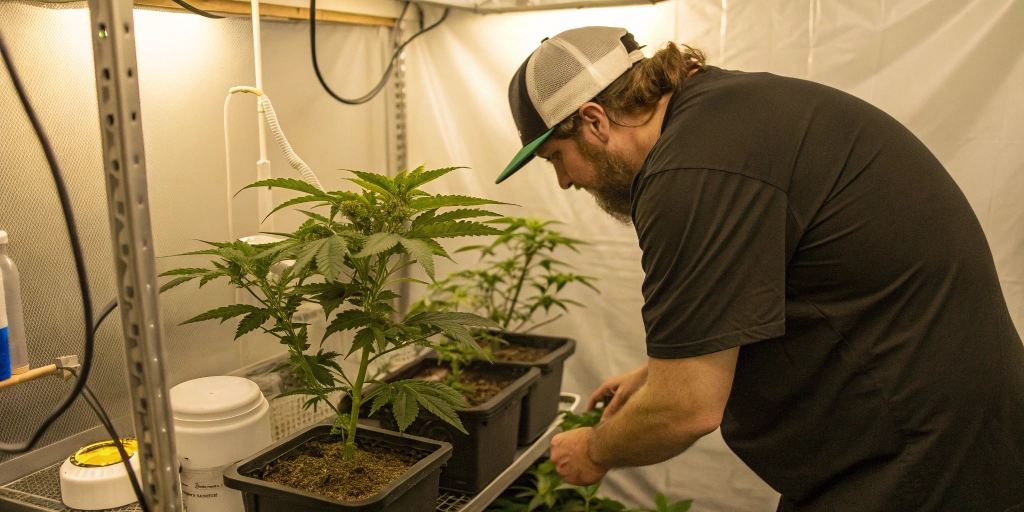
FAQs about Fat Banana Auto strain
What is the typical THC content of Fat Banana Auto strain?
The THC levels in Fat Banana Auto strain usually range from 18% to 24%, delivering a potent yet balanced high that stimulates creativity and provides gentle relaxation. Consistent breeding and precise cultivation practices ensure each harvest maintains these levels, offering a reliable experience. Users appreciate its dependable potency that caters to both recreational and medicinal needs without overwhelming sedation.
How long does it take for Fat Banana Auto strain to flower?
Fat Banana Auto strain typically flowers within eight to ten weeks after the onset of a 12/12 light cycle, making it a fast and efficient option for growers. Its auto-flowering trait guarantees a smooth transition from vegetative to flowering stages, resulting in consistent yields. This quick turnaround allows for multiple harvests in a year, which is ideal for those with limited growing space or time.
What flavor profile can I expect from Fat Banana Auto strain?
Fat Banana Auto strain offers a unique tropical flavor with sweet, banana-like notes enhanced by a subtle hint of spice. Its aroma is both refreshing and inviting, delivering a sensory experience that is balanced and complex. The flavor profile complements its balanced, uplifting effects, making it a favorite among users seeking a distinct yet smooth high that captures the essence of tropical freshness in every puff.

